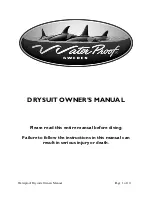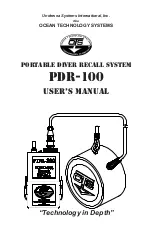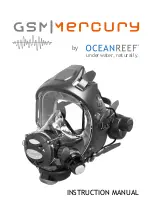
Spirobank II
Rev.1.6
Page 28 of 35
User manual
POST test
A = two acceptable FEV1 values matching within 100 mL
B= two acceptable FEV1 values matching within 200 mL
C= two acceptable FEV1 values that do not match within 200 mL
D= only one acceptable FEV1 manoeuvre
F= No acceptable FEV1 manoeuvres
An acceptable manoeuvre means: good start and satisfactory exhalation (duration and flow)
Several
comments
related to the single test are calculated, however
Spirobank II
will only point out the most relevant to facilitate the test
interpretation.
ERROR IN Vext and PEFT
If the extrapolated volume Vext is greater than 500 mL or more than 5% of the FVC,
or
if the PEFT (time to peak flow) is greater than
200 ms, this message is shown:
Repeat test and blow faster
FET ERROR
If the
FET
is less than the minimum (6 seconds), this message is shown:
Expiry time insufficient < 6s
FLOW ERROR
If the last point of the F/V curve is greater than 200 mL/s, this indicates that the expiration was not complete and thus this message is
shown:
Blow out all air in lungs
Between tests, the
Spirobank II
checks the repeatability of the following parameters:
If FVC is > 1.0 L then:
FEV1
repeatable when the difference between the two largest FEV1 is
≤
150 mL;
FVC
repeatable when the difference between the two largest FVC is
≤
150 mL;
if FVC is
≤
1.0 L then:
FEV1
repeatable when the difference between the two largest FEV1 is
≤
100 mL;
FVC
repeatable when the difference between the two largest FVC is
≤
100 mL;
2.11
Oximetry Testing
WARNING
Check if the oximetry function is available in the device, this function is an option in some models. This is not available in
BASIC version.
WARNING
The oximetry sensor used in the manual is only one of the different types of sensors which can be used listed in paragraph
2.2.4. MIR does not recommend any particular sensor; the doctor will chose the sensor which she/he believes to be more
suitable.
During oximetry testing the Spirobank II cannot be turned off. To turn off the device the oximetry test must be stopped first.
This has been implemented so as to avoid any unwanted interruptions which could compromise the accuracy of the data.
For the non-invasive measurement of
SpO
2
oxygen saturation
and blood pulse rate
,
utilize the re-usable finger sensor. This sensor is
recommended for patients weighing more than 20 Kg while remaining still during testing. For the 6 minute walk test other types of
sensors are recommended which are less influenced by the movement of the hand.
To carry out an oximetry test:
•
Connect the sensor to the device: insert the connector with the arrow
(printed on the connector) face-up, as shown:
•
Choose a high perfusion site, easily adaptable to the sensor.
•
Insert the finger into the sensor until the finger touches the end of the
probe. Ensure that the bottom part of the finger completely covers the
detector. If the finger cannot be placed properly inside the sensor try
another finger.
•
Place the sensor so that the cable rests on the back of the hand. This
ensures that the light source rests. On the side of the nail and the reader
on the lower part of the hand.








































